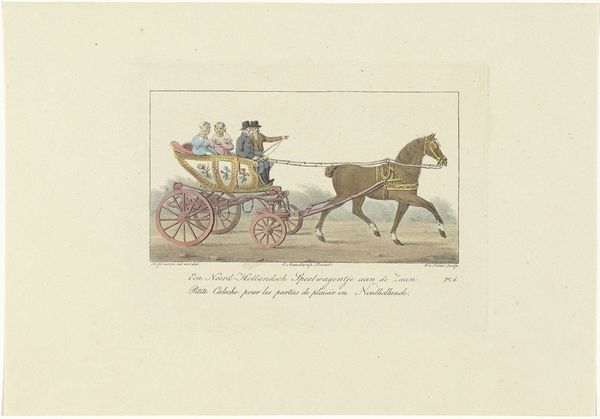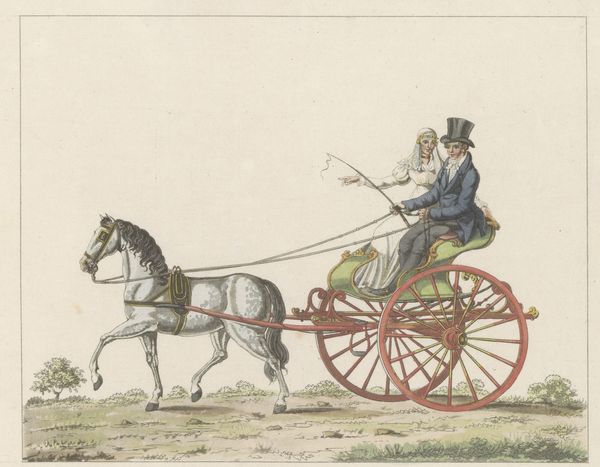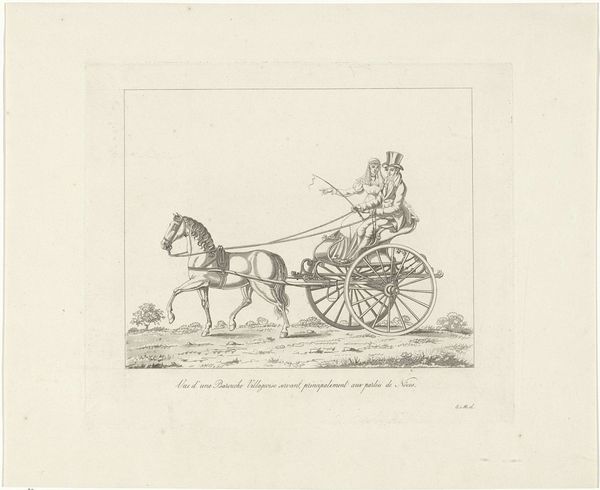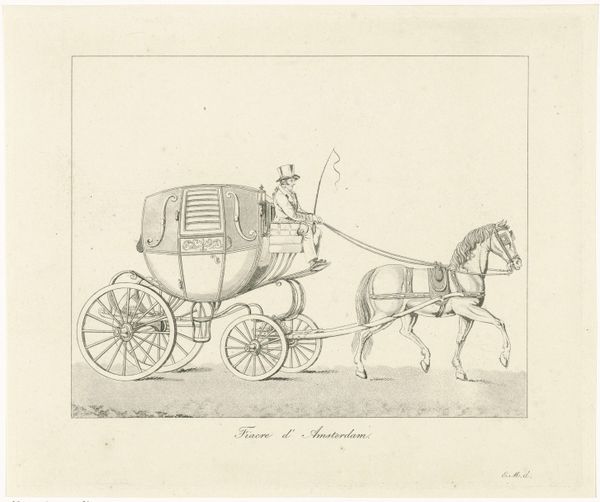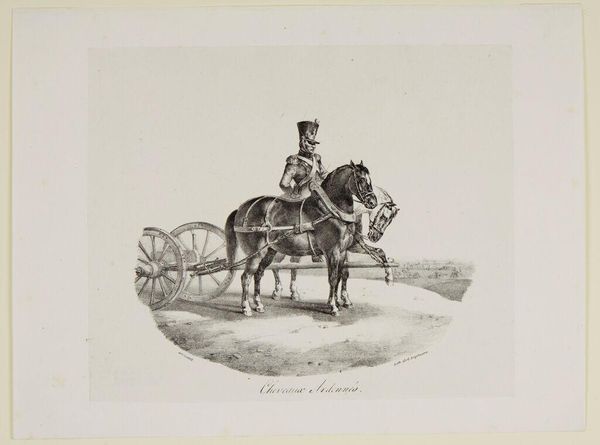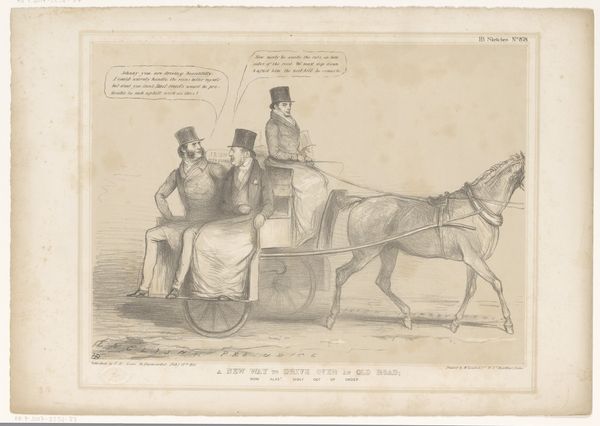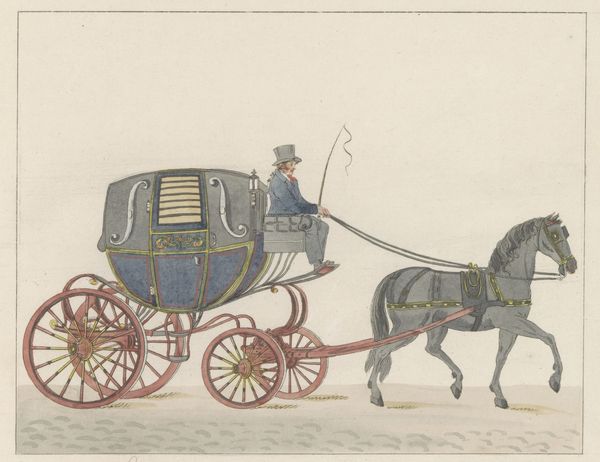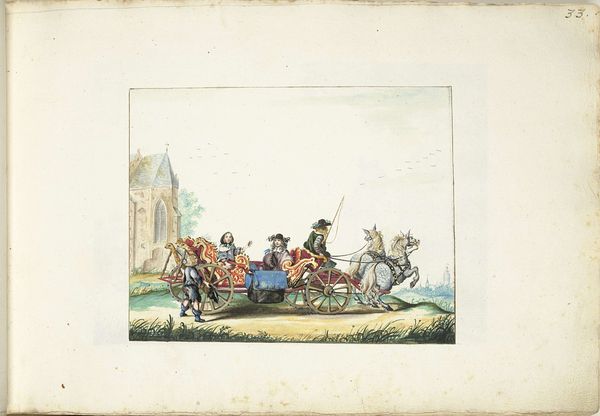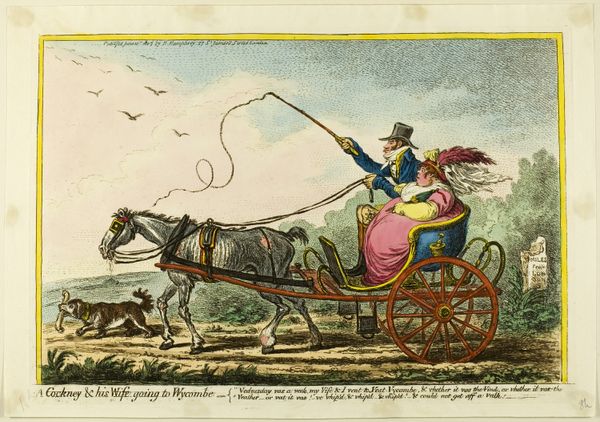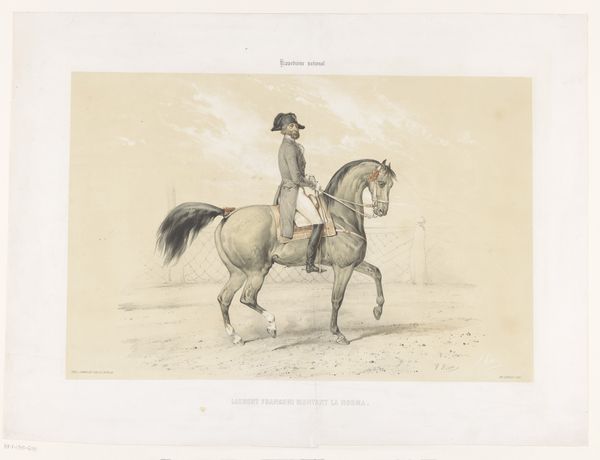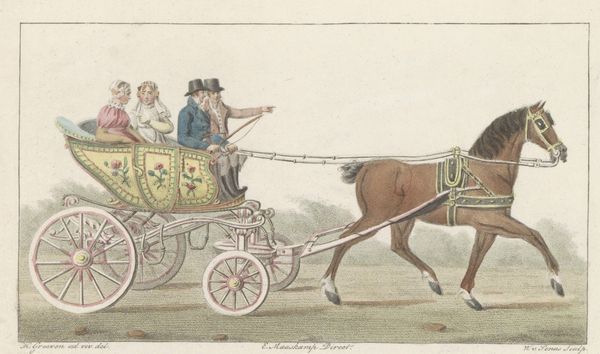
drawing, plein-air, watercolor
#
portrait
#
drawing
#
plein-air
#
landscape
#
watercolor
#
romanticism
#
watercolour illustration
#
genre-painting
Dimensions: height 190 mm, width 226 mm
Copyright: Rijks Museum: Open Domain
Editor: Here we have "Paar in een koets," or "Couple in a carriage," an 1824 watercolor drawing by Willem van Senus. The subdued palette gives it a rather serene quality, even with the active horse pulling the carriage. What strikes you most about this piece? Curator: I notice the way this image participates in constructing an idea of Dutch identity in the early 19th century. We see a couple, likely middle-class or aspiring to that status, engaging in leisure. The act of taking a carriage ride through the countryside becomes a signifier of social standing. Think about who *couldn't* afford such a thing. How does the setting—a seemingly rural scene—play into that dynamic? Editor: It's interesting to consider this image not just as a portrait, but as a social statement. The open landscape does create a stark contrast with the couple's obviously privileged lifestyle. Do you see any evidence of that tension within the artwork itself? Curator: The very act of depicting it as a drawing, accessible for public consumption and eventual museum display, is important. Someone clearly deemed it significant, contributing to the ongoing story of the Netherlands' societal fabric. I also notice the almost generic features of the couple. They’re types, rather than specific individuals. Editor: So, the artist isn’t necessarily commenting on these specific individuals but using them to make a broader statement. It's like observing the symbols of class in motion. I guess I hadn’t thought about genre painting this way. Curator: Exactly. Considering the Romantic era, too, with its interest in the natural world, there's an inherent dialogue present. They may see themselves as being "of nature," in the style of Rousseau's social contract ideas, when in reality they seem completely divorced from it. It also raises questions: Where and when would it be typically exhibited? Why drawing and watercolor and not oil? These are clues to understand its social and cultural life. Editor: I definitely see a deeper layer of meaning now, thinking about how the image situates this couple within the social and political landscape of their time. Curator: Right. This wasn’t just a simple plein-air sketch, it's a coded message about social status and the way leisure functions in defining national identity. We get a little window into what a family or public exhibition room may have been like at the time, and the values people appreciated, which, incidentally, are values which museums work to solidify.
Comments
No comments
Be the first to comment and join the conversation on the ultimate creative platform.
